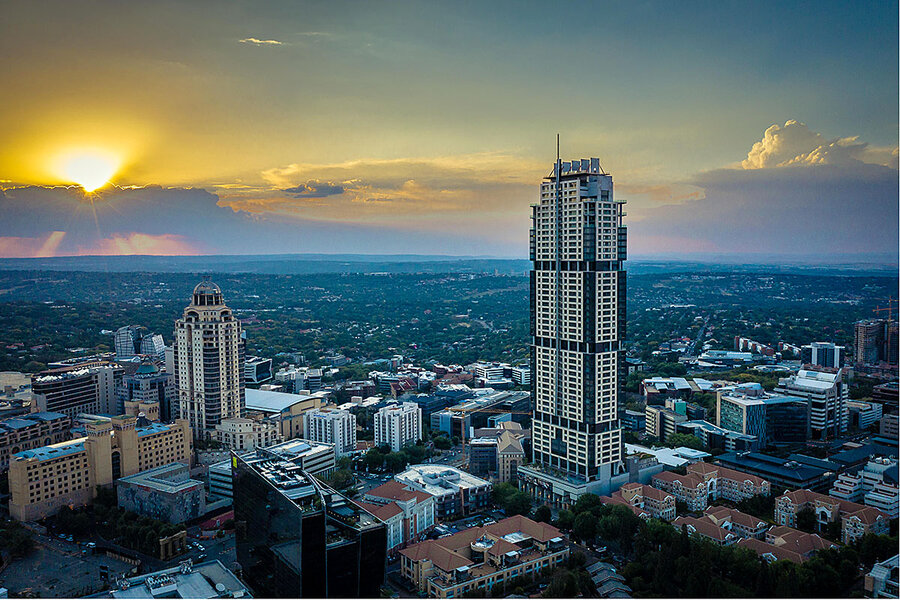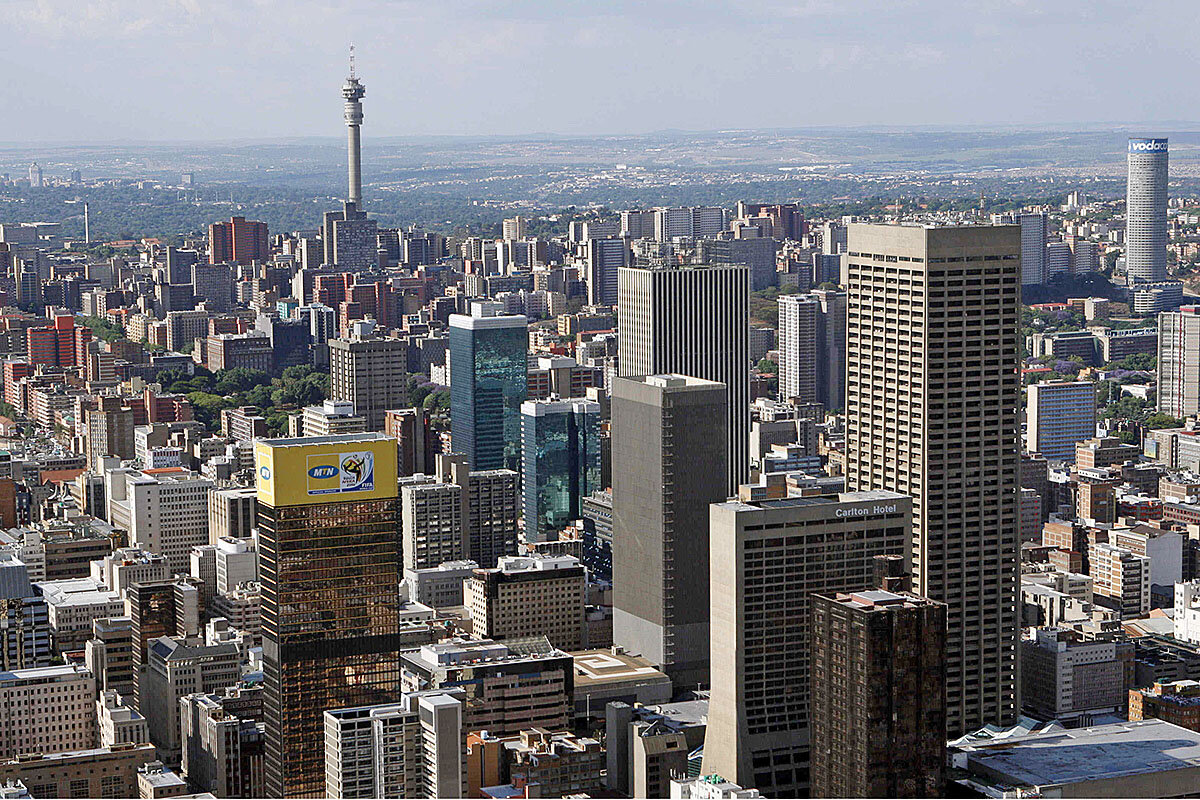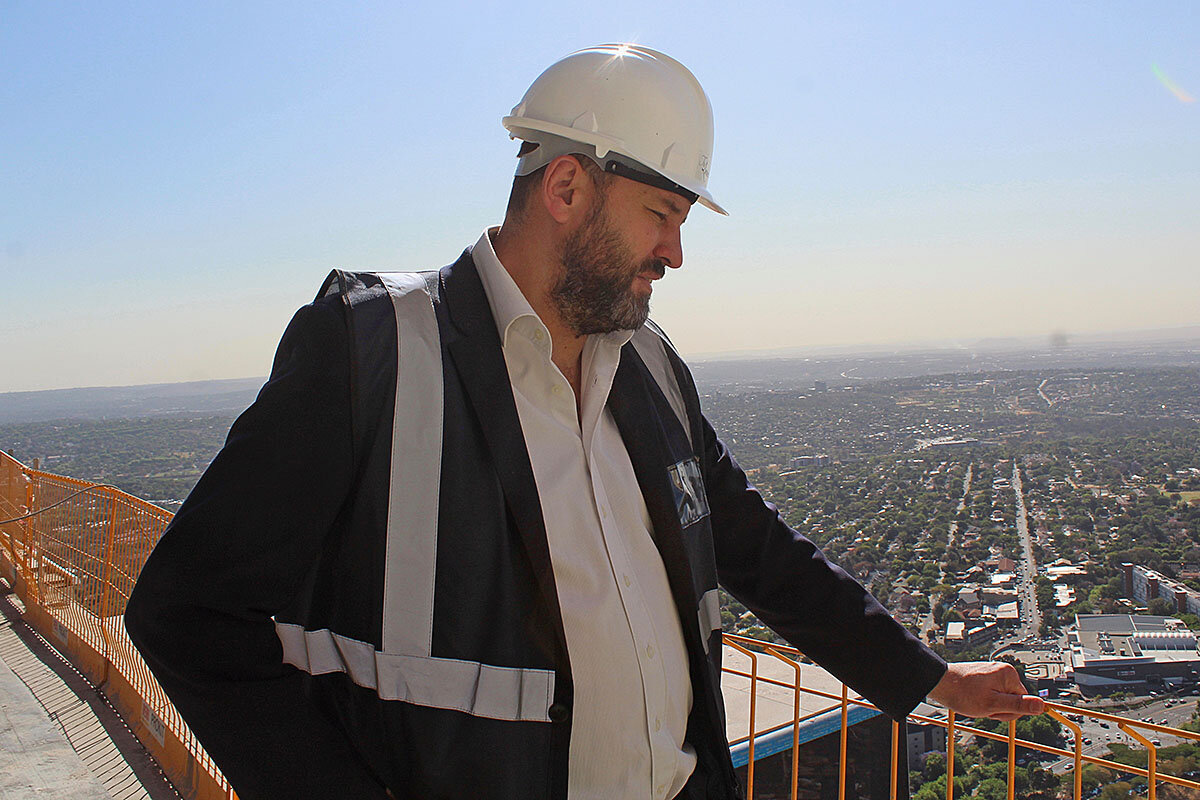A city’s ambitions, measured in skyscrapers
Loading...
| Johannesburg, South Africa
For 46 years, Africa’s tallest building, the Carlton Centre, cut a blocky silhouette in the skyline of downtown Johannesburg.
The 50-story concrete tower stood like an anchor as the city around it churned. On the streets below, apartheid rose and fell. The European immigrants who once set up shop across the city center, selling tiny Italian coffees and handmade leather shoes, were replaced by immigrants from across Africa, selling tiny Ethiopian coffees and boldly printed African dress shirts. The city center emptied and filled, crumbled and gentrified.
And through it all, like a hangover from another era, the Carlton stood unchallenged as Africa’s tallest building.
Why We Wrote This
Architecture can embody ambition. That was true in apartheid-era Johannesburg, which built the continent’s tallest tower. And it’s true today, under very different circumstances, as a new building vies for the title.
Not that no one else tried. Every year or two for the past decade or so, another developer somewhere on the continent has promised that they were preparing to build something taller than the Carlton. Would it be the 70-story glass tower in Nairobi? The glowing orb at the center of a private city in Ghana? The “Dubai-style mega-project” near Cairo?
Ultimately, the first successful challenge to the Carlton’s reign came from much closer to home. In September, a developer announced that Africa officially had a new tallest building, a luxury tower called the Leonardo, just 11 miles to the Carlton’s north. At 234 meters, the Leonardo stands 11 meters taller than its rival downtown – enough to squeak into the record books (though technically, that record is still pending).
All around the world, skyscrapers have a way of holding a mirror to a society’s ambitions. They show a place as it wants to be seen, a projection of its dreams literally stretching toward the sky.
“A very tall skyscraper is a brand of optimism,” says Melinda Silverman, an architectural historian at the University of the Witwatersrand in Johannesburg. Building one is an announcement of stature, she says, a way of saying this city has arrived. Think New York and Chicago in the 20th century; Kuala Lumpur, Taipei, and Dubai in the 21st . For Johannesburg, a scrappy gold mining camp that grew into a metropolis of millions, a place still self-conscious about its place in the global pecking order, skyscrapers have also been a way of announcing that it too belongs among the world’s powers.
“This building is proof of our faith in this country,” says Jamie Hendry, development director for the Legacy Group, which built the Leonardo. “We see it as a huge beacon of hope for South Africa.”
It is no coincidence, Dr. Silverman says, that both the Carlton and the Leonardo took shape at moments when South Africa had a lot to prove.
Building through boycotts
The Carlton – along with a host of other bleak concrete skyscrapers built around the same time – was part of a distinctive moment in the history of both South Africa and its architecture. As the 1970s crested on a continent of newly independent black nations, South Africa’s brutal white government was increasingly out of sync.
But it was a rich outcast – the world’s leading gold producer with cash to spare. And the more backward its politics appeared to the outside world, the more imposing and audacious the country’s architecture became.
Between 1965 and 1977, more than 60 tall buildings crowded their way onto Johannesburg’s skyline. Wilfrid Mallows, a prominent city planning scholar, announced that the Carlton, with its five-star hotel and glittering shopping mall, projected on Johannesburg “the image of an international city” for the first time.
Ironically, however, even as the final slabs were being laid on those skyscrapers, the city around them was splintering apart. In June 1976, visitors facing southwest from Carlton’s observation deck could probably see smoke rising from behind the yellow mine dumps that marked the edge of the city. Just beyond, the townships of Soweto, home to much of the city’s black population, had erupted in protest.
By the 1980s, frustrated by the apartheid government’s refusal to reform, major global businesses pulled out of the country in droves. And as they did, the inner city around them buckled. The Carlton, once surrounded by the opulent optimism of apartheid’s best years, was soon encased in the rot of the same system’s decay.
Turning the page
Fast forward 30 years and South Africa has once again got a lot to prove. The country’s economy is struggling to come out from under the shadow of repeated corruption scandals, which have emptied government coffers and spooked international investment. Its currency, the rand, has lost half its value against the U.S. dollar over the past seven years.
The Leonardo, with its infinity pools and marble floors, sends a message, Mr. Hendry says.
“We must put our stamp on the continent, and tell everyone that this is still the strongest economy in Africa,” he says. “The Leonardo is the jewel in our crown.”
On a recent afternoon, he stood on the building’s unfinished viewing deck, looking out over the smog-glazed district of glass-faced office blocks and shopping malls below. The Leonardo sits in the center of Sandton, a sleek and sterile business district dubbed the “richest square mile in Africa,” which sprung up as downtown’s fortunes began to buckle.
Below, construction whirred on the building’s sleek angular apartments, its luxury hotel, and its spas, restaurants, nursery, and shops. Most of the building’s 250-odd apartments are already sold, with prices ranging from R5 million ($340,000) for a boxy one bedroom to R250 million ($17,200,000) for the triple-floor penthouse with a private pool and outdoor garden.
Across town at the Carlton meanwhile, visitors queued to pay R30 ($2) to catch a lift to the 50th floor viewing deck, which still describes itself as the “Top of Africa.” It was just possible to make out the Leonardo’s outline through the scuffed windows. Nearby, displays faded to sepia-tone droned about the Carlton’s construction. Meanwhile, two teenage boys scratched their names into the wood walls, covered in the names of rule-breaking visitors.
Outside, the Carlton and the Leonardo faced each other across the skyline, bookends to a city and its history.








